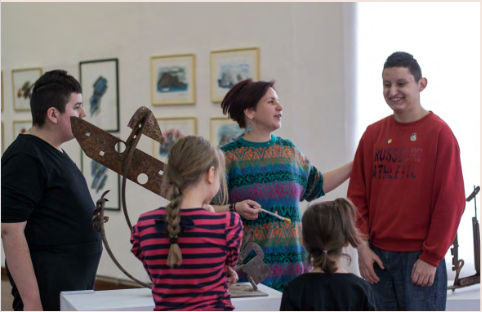Currently museums in Europe face multiple challenges in a rapidly changing world; from climate change, decolonisation to cost of living crisis, challenged democracies as well as recovery from the recent Covid-19 pandemic. The sector is being asked to consider diversity and inclusion in both policy and practice. According to ICOM, inclusion and diversity is interpreted to include ethnicity, gender, sexual, orientation and identity, socioeconomic background, educational level, physical ability, political affiliation and religious beliefs.
NEMO, the network of European Museum Organisations explores diversity and inclusion in European museums through a report and several case studies.
The report was commissioned by the NEMO Working group LEM (the learning museum) with a specific focus on diversity and inclusion in museums. It is an attempt to capture the variety of theories and practices that exist in this broad subject area. The publication draws primarily on the content provided by members of the NEMO Network and the Working Group LEM.
The survey captured responses from mostly staff members of museums both state and privately funded, umbrella organisations and a small number of individuals. It captured key areas of importance for this topic. A total number of 55 responses were received.
When respondents were asked whether or not the organisation had a diversity and inclusion policy in place, the responses were almost evenly split between the following categories. 29.1% said their organisation had no policy, while 35.4% said their organisation had a policy. Other responses reflected how inclusion and diversity is in their strategic plan or falls under human resources. The smaller percentages of responses were nuanced and related to individual organisational or members’ own approaches to the question. These ranged from citing their organisational strategic plan, equality and non- discrimination plan, gender equality policy as well as safeguarding policy of children, elderly and vulnerable groups.
One response referred to diversity and inclusion as a key approach in the planning of programmes
and exhibitions, while a number of other responses referred to it as an overarching practice in their
institution albeit they may not have a written document, diversity and inclusion are taken for granted in the organisation. The diversity of language was cited as very important but not defined in a policy.
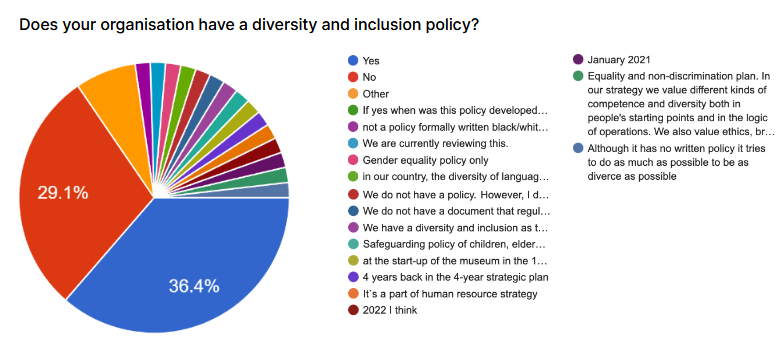
There were 49 responses to the question of which department or member of staff is responsible for diversity and inclusion in the organisation, and the roles of those assigned are varied. They range from curators, education departments, management, marketing, trustees, human resources, specific collection departments and directors. One response identified a director of inclusion and belonging in their organisation.
When asked whether the organisation's diversity and inclusion policy has an impact on respondents' current practice, the overall response was positive. 73.1% of respondents said that their organisation's diversity and inclusion policy had an impact on their current practice. 26.9% said it had no impact on their work. 38 members responded that they were aware of diversity and inclusion in their practice, particularly in relation to programming for different audiences and target groups, policy making, exhibitions and special projects.
17 members fed back and said diversity and inclusion is not a priority for their organisation due to a number of factors including no buy-in from senior management and trustees to not having a policy to support the work or relevant staff to take the lead in this practice.
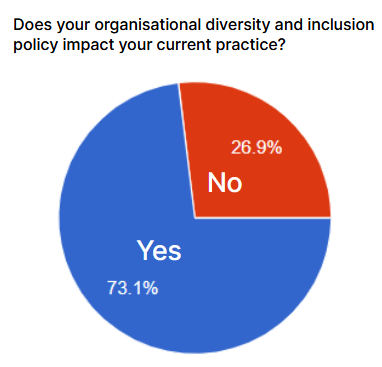
A quietly revealing question was whether the organisation has a definition of diversity and inclusion. Of the 44 responses, the majority of members do not have a specific definition. Many of them base it on their country's foreign policy or on values that reflect the ethos of the organisation.
Respondents were also asked whether the policy of the institution they work for is influenced by similar national diversity and inclusion policies in their country. From the feedback received from the 41 respondents, a number of national government policies were cited as a reference point that informs the work of some NEMO members. Other examples ranged from the ethos of a particular organisation inspired by an individual historical figure to the latest definition from the International Council of Museums.
The Learning Museum (LEM) Working Group explores topics relating to the fields of museum education, audience development, intercultural dialogue and lifelong learning.
Case studies
The pockets project – The National Gallery of Ireland
In 2023 the National Gallery of Ireland’s Community Education Programme collaborated with a
number of partners to work on The Pockets Project. The initiative responded to the National Gallery of Ireland’s major exhibition Lavinia Fontana: Trailblazer, Rule Breaker. The approach combined inclusive and accessible art historical learning, practical and sustainable sewing techniques as well as diverse community work.
Shelter – Climate, Migrations, Heritage – Poland
Shelter was a multidisciplinary research, educational and artistic project involving field studies in Poland, Norway and Iceland which collected traditions of local communities and various ethnic groups, recorded generational memory of climate change, past adaptation processes, community use of resources, and good management practices drawn from the experience of previous generations. The research focused on cultural diversity and integration strategies of immigrants.
Barvalo, Roma, Sinti, Gitans, Manouches, Voyageurs - MUCEM, France
In Romani, barvalo means “rich” and, by extension, “proud”. This term has multiple meanings and was the title of an exhibition at the Mucem in 2023 dedicated to the history and diversity of Europe’s Romani populations. Mucem invited a group of contemporary Romani artists to reflect on prolonged stereotypes, racial discrimination and violence against Romani communities. They worked with intellectuals, scholars and curators who specialise in Romani art and history to develop this exhibition.
Photographic exhibition of every-day life of the Indian community of Rethymno Crete, Greece
Ιn 2021, the annual European Heritage Days celebrated All-Inclusive Heritage. An exhibition of photographs depicting daily activities and religious celebrations of the community was displayed in the Temporary Exhibition of the of the Archaeological Museum of Rethymnon. The Ephorate of Antiquities of Rethymno, Crete, welcomed local members of the Indian community in the Temporary Exhibition.
Dialogues engagés / Committed Dialogues - Musée d’Orsay et de l’Orangerie, France
Since 2022, the Musée d’Orsay and the Musée de l’Orangerie have worked with the Puissance de Femmes collective, which works to give visibility to women who keep associations alive in priority neighbourhoods. In a series of videos filmed at Musée d’Orsay, the women in this collective speak out about the work they have done together. Through their encounters with the museum, they share their commitment and the importance of emancipation through culture.
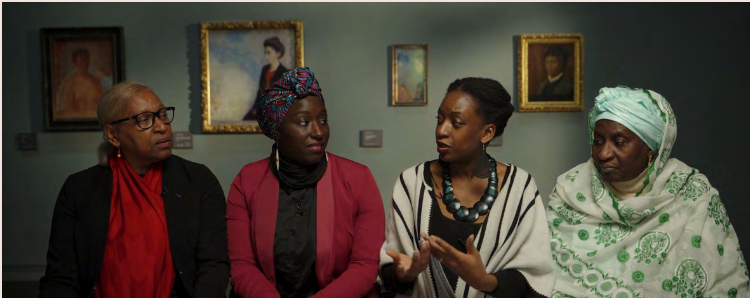
Places of Sanctuary - Network Places of Sanctuary, Ireland
Places of Sanctuary is a network of groups and local communities which share objectives of promoting a culture of welcome and inclusiveness across every sphere and sector of society in Ireland. The network is supported in Irish libraries, schools, health care sector, universities, churches, local councils, nature and heritage and more recently in museums.
Loved Malta: Stories of Sexual and Gender Identity, Heritage Malta
The exhibition [BE] Loved Malta: Stories of Sexual and Gender Identity was developed and launched in parallel with the first EuroPride and the 50th anniversary of the decriminalisation of homosexual acts in Malta in 2023.The exhibition incorporated the intangible heritage of the LGBTIQA+ community through an immersive and audiovisual experience. Ten stories were told through an audiovisual narration, each featuring central protagonists, and played a central focus in the exhibition.
Exhibition Aux temps du SIDA - MAMCS – musée d’art moderne et contemporain de Strasbourg, France
The exhibition Aux temps du sida (In the time of AIDS) explored the last forty years of the AIDS
epidemic which still exists despite major medical advances. As a multi-disciplinary exhibition, it presented four decades of creative work in which the visual arts, literature, music, film and dance
meet scientific research, popular culture and the decisive action of associations.
Gender diversities and the Sustainable Development Goals - Museo Civico di Scienze Naturali e Archeologia di Montebelluna, Italy
The exhibition showcases objects of natural history and archaeology. It aims to disrupt gender binaries and stereotypes, investigating gender from a non-binary and fluid perspective.
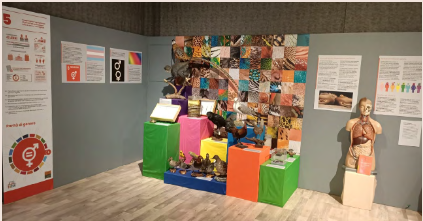
LGBTQIA+ inclusion in European museums: An incomplete guideline, NEMO
At the NEMO European Museum Conference 2024, NEMO launched its new resource ‘LGBTQIA+ inclusion in European museums: An incomplete guideline “.
Your Gallery at School - National Gallery of Ireland
Your Gallery at School is an ambitious outreach programme that brings the National Gallery of Ireland directly into classrooms and education settings around the country. the initiative builds on the success of the Gallery’s established schools programme to develop relationships and spark creativity beyond the Gallery walls.
Blue Artism - National Gallery of Bosnia and Herzegovina
In 2018, the National Gallery of Bosnia and Herzegovina created a museum-educational methodology to address the needs of people with developmental disabilities. Blue Artism has an established structure consisting of breathing exercises in motion, speech-language adapted discussion about selected artworks, sensory exercises, creative-manual work with different art materials and emotional self-evaluation.
Polish aid for Ukrainian museums - National Institute for Museums
In response to the Russian invasion of Ukraine in February 2022, the Polish Ministry of Culture and National Heritage, National Institute for Museums, Polish museums and museum professionals commenced various activities aimed to help Ukrainian museums and their employees. The National Institute for Museums organised a contact point and a reference centre for many such initiatives. The National Institute for Museums worked with Ukrainian museum professionals to use their recent experience for development of recommendations for Polish museums on acting in times of crisis and war. These guidelines have been translated into English and are available to museums in similar crises.
Who is afraid of Decolonisation? NEMO training on Decolonisation in museums
In September 2022 NEMO invited Dr Roshi Naidoo, Decolonising Programme Officer of the Museums Association UK, to facilitate decolonisation in museums for network members. The training took place in Bristol, UK. According to the Museums Association, decolonisation in museums can range from repatriation of objects, reframing objects and how they are catalogued to diversifying the museum workforce.
Faiths in Focus - Chester Beatty, Ireland
The Chester Beatty’s collections have been described as the finest collection of manuscripts and books assembled by a private collector in the 20th century. They originate from across Asia, the Middle East, North Africa and Europe and are central to the museum’s vision and mission which encourages visitors to compare, contrast and explore the historical, cultural, scientific and religious aspects of its collections.
Read the report here.
--
Photo credits:
Central photo: Blue Artism project, The National Gallery of Bosnia and Herzegovina
Museo di Scienze Naturali e Archeologia di Montebelluna
Puissance de Femmes collective Musée d’Orsay and de l’Orangerie








